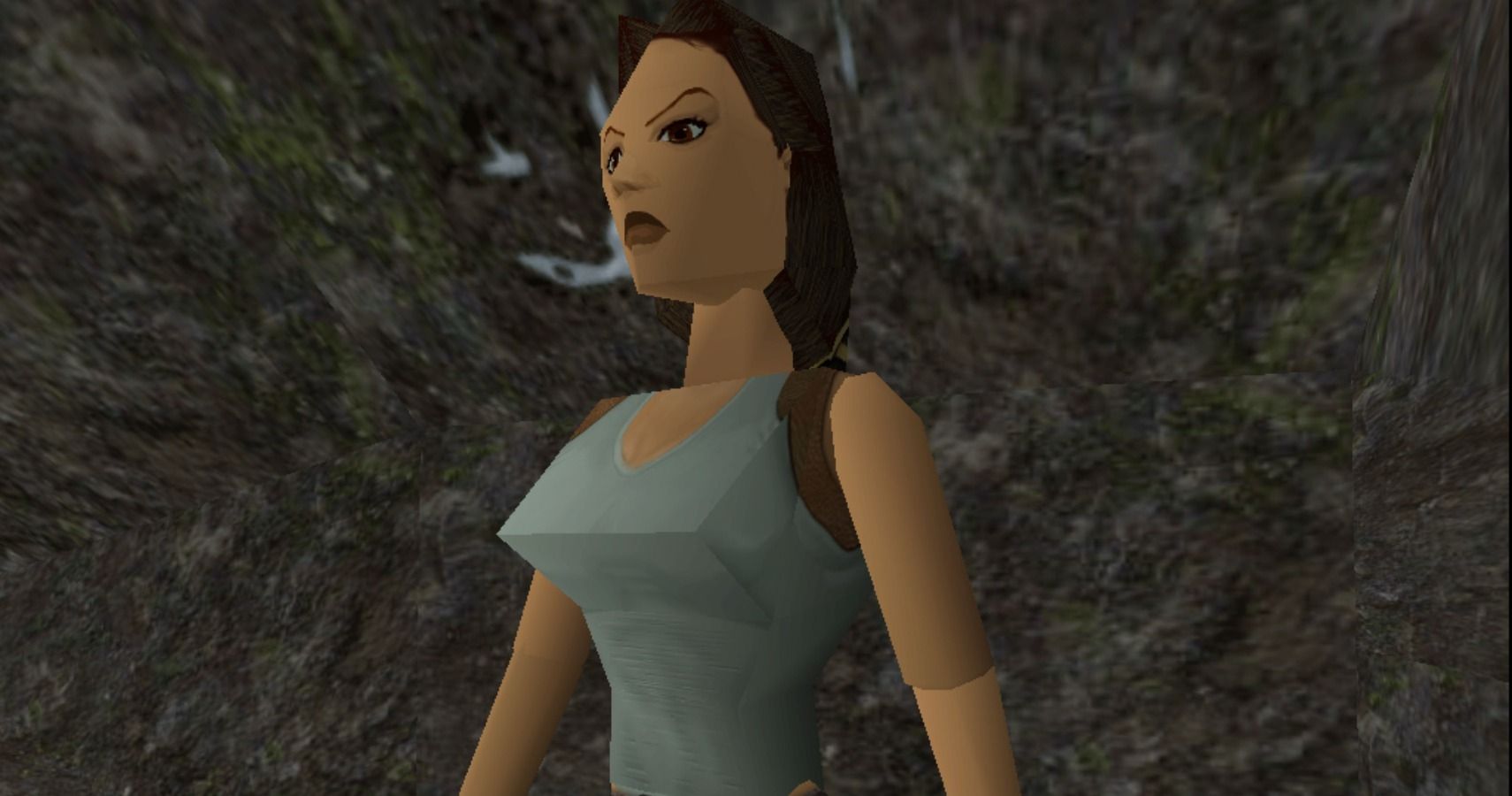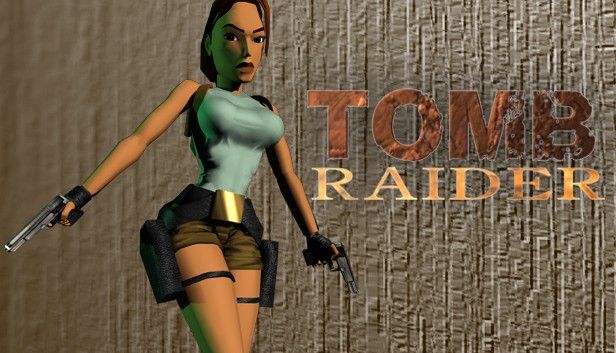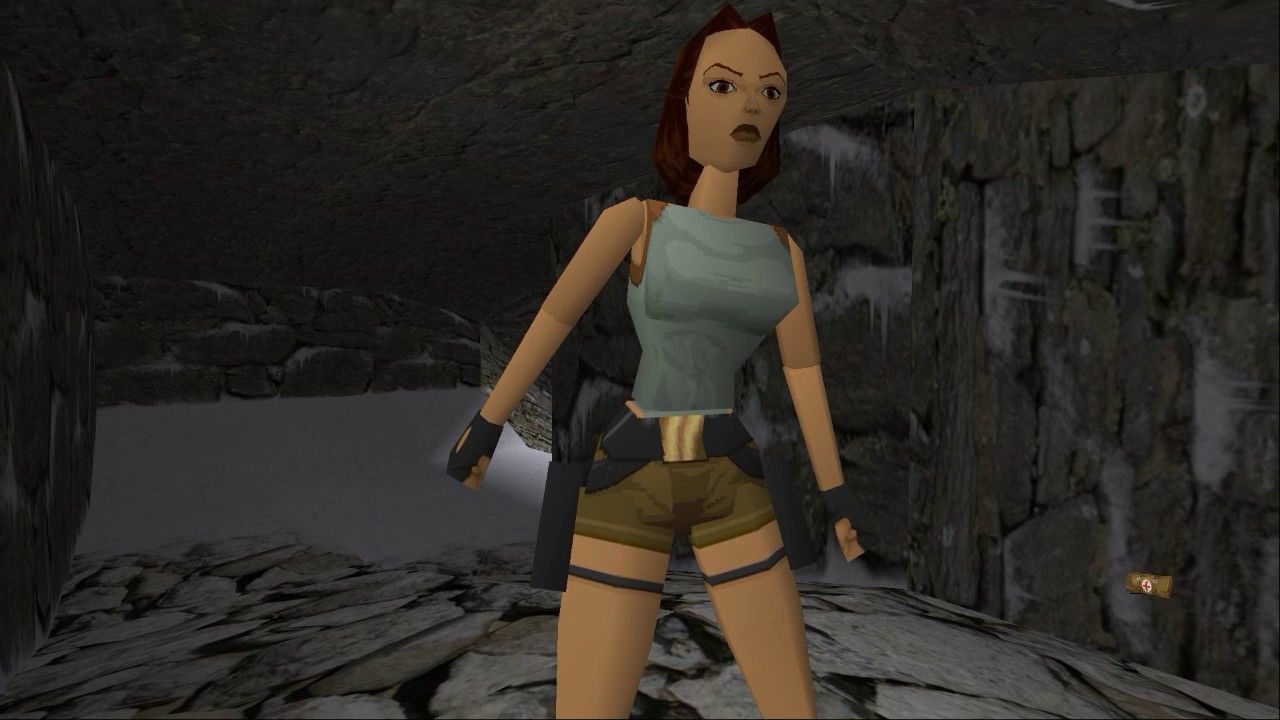Stories about iconic bugs become part of a game’s history, told and retold until they become myth. Much like stories in film about enforced method acting or once-in-a-lifetime takes, these errors gradually take on a life of their own that is unique to the medium of games. The legacy of Tomb Raider is no exception. Although many of you have probably heard and possibly repeated the story that Lara Croft’s dramatic silhouette was the result of a momentary accident that was kept in, that isn’t and never was the case.
Like many urban legends, the story of the Lara Croft bug has shifted slightly over the years. In some versions, it’s a slip of the mouse that sees her model go from “slightly adjusted” to “overly inflated”. In others, it’s a typo, a misplaced digit changing a value increase from 50% to 150%. Sometimes a cynically sleazy executive passes by and gives ‘the new version’ a thumbs up, and other times it’s the enthusiastic reaction from colleagues working nearby.
Unlike many urban legends, its source can be neatly tracked down. Toby Gard, Lara’s original concept artist and animator, did make a joke about the idea. In a 1997 interview with culture and fashion magazine The Face, he was audaciously asked about Lara’s “unfeasibly large knockers”. (The ‘90s!) Gard’s glib reply was the foundation for the ‘accident’ story as it’s told today. “Slip of the mouse. I wanted to expand them fifty percent and then - whoops, one-hundred and fifty percent. Darn.”
24 years after this interview, I reached out to Gard about the origin of Lara’s ‘accidental’ silhouette. “It was of course a joke,” Gard explains. “Indeed all the answers from that interview, which was one of my first, were entirely flippant. I tried to make them all so ludicrous that no one would believe them. I mean, there are undo functions right? Even at the time I thought it outrageous that an interviewer would be asking questions about boobs and didn’t think it dignified a proper answer. But of course I didn’t know at the time that sarcasm doesn’t read on a page. And so that and other insane statements from that interview became enduring myths.”
The myth as we know it started as a game of telephone (one that even I’ve taken part in, though I tried to appropriately contextualise it as myth). Some details, such as Gard’s original quote, were reported or paraphrased at the time, at which point those secondary sources became a starting point for the next teller, and so on. When things don’t add up, or details become fuzzy, new sources add new information. As Gard points out, it should be pretty obvious that there’s an undo button, so the second party who issues approval immediately became part of the story to fill in that logic hole. A few years later, yet another joke contributed a brand new set of quotes to the myth, as well as the ‘coding error’ version of events.
On April 1 2000, GameSpot published an article titled, Lara Croft’s Breasts “An Awful Mistake”. Note the date: it’s an April Fool. This piece is either the top result or cited in the top results for searches about the ‘error’, depending on your phrasing. Meanwhile, Gard’s original interview is in an out-of-print issue of a magazine, and archived on a fansite that is no longer live.
The article cites “CORE Design programmer” Nigel West as disowning the adventurer's provocative design. “West said that a simple miscalculation in one of the thousands of lines of code that went into the Tomb Raider series of games resulted in the Lara as she is known today. As manufacturing and marketing plans drawn up by Eidos had already been placed in motion, to go back and rectify the programming slip-up would have meant scrapping the launch.”
It should be made clear that Nigel West does not exist – at least, not this Nigel West. Of the Tomb Raider games released before 2000, he appears in none of the credits. While it isn’t unheard of for creators to be written out of the credits of games where they leave mid-production, the creation of the original Tomb Raider has a well-documented history. The first Tomb Raider game was developed by a very small team, and West definitely wasn’t part of it. Unlike Gard’s joke being misconstrued, these quotes are entirely fictitious.
The piece is satirical, poking fun at both overly-invested fans and the conservative backlash against Lara’s appearance. ‘West’ is a mouthpiece who vocally hopes that Lara’s appearance wouldn’t “detrimentally affect” consumer’s buying choices (when we know Tomb Raider was marketed around, and had substantial buy-in from consumers because of, Lara’s sexualised appearance). He also disavows any intentional part of the design because he is himself a father of daughters, in a tidy two-for-one in bad conservative arguments of ‘think of the children’ and ‘I respect women, because I myself parent some’. To top off the obvious joke, the piece closes with a time-limited offer to trade in your copies of Tomb Raider, for one “where Lara’s chest is said to be noticeably flatter, but neither ‘too large or too small.’"
The GameSpot article doesn’t only contribute to the myth, it inadvertently explains why it’s still so prevalent today. Despite being written in 2000, the piece reflects some of the positions about Lara’s design that are still talked about decades after her creation - even down to predicting the absurd controversy around the ‘too small’ 2013 reboot. She’s a divisive and heavily discussed character, but her silhouette is undeniably iconic. To this day, she still holds the Guinness World Record for “most recognisable female character in a video game”. It’s hard to believe that if Gard had joked about something less sensationalised, the story would have endured for so long.
In context, both Gard’s comments and the GameSpot article are obvious jokes. Devoid of context, however, details and quotes can be repeated to fit a mythology that suits the teller. Even when parts don’t add up, people like to believe these quirks, especially when they’re about something provocative or controversial. There’s a small truth at the core of the myth, a real quote once spoken, but the rest is a collective act of poor attribution and mythmaking. Now we’ve unravelled this mystery to its core, perhaps it’s time we put this particular Tomb Raider Legend to rest.



